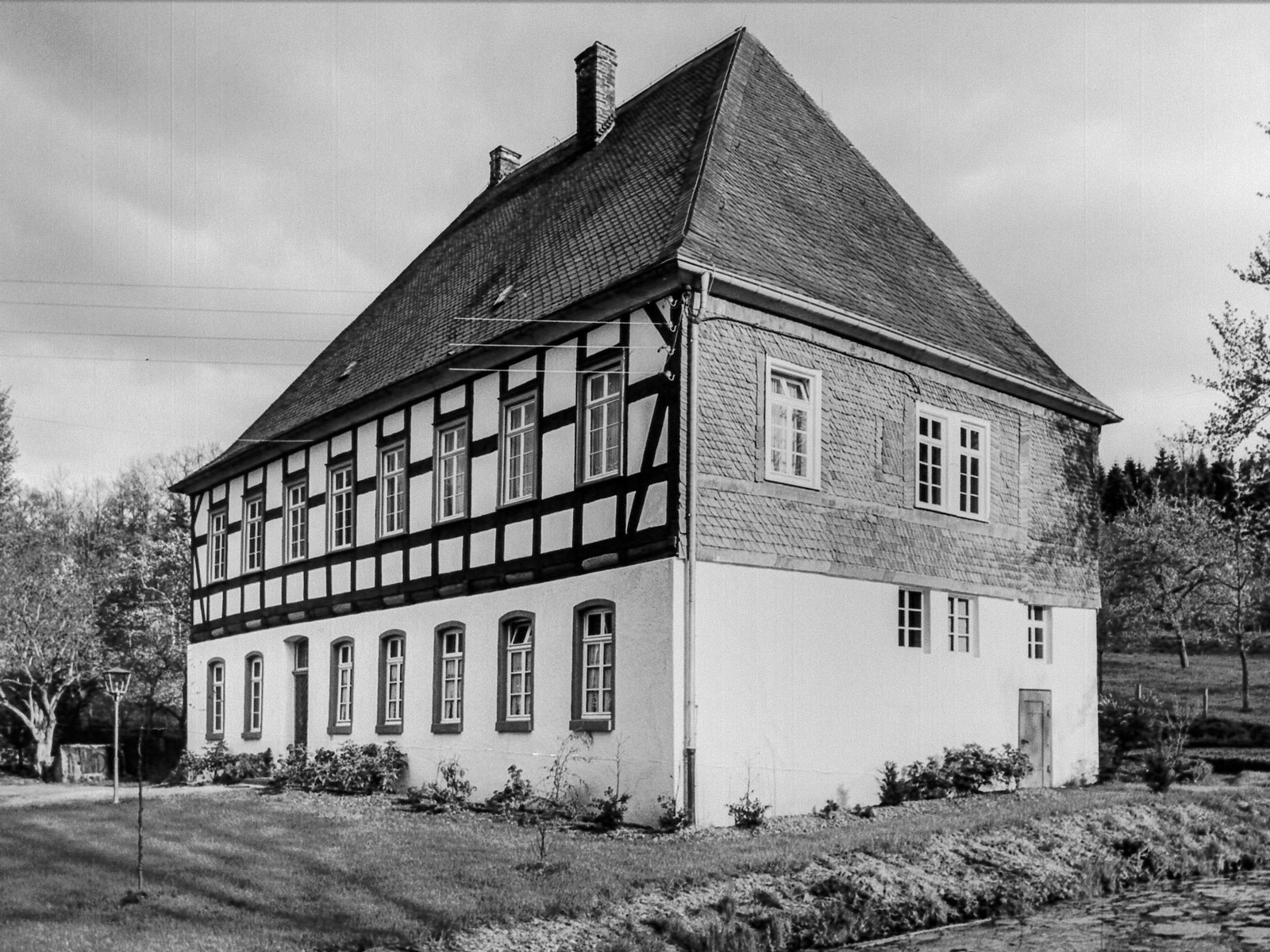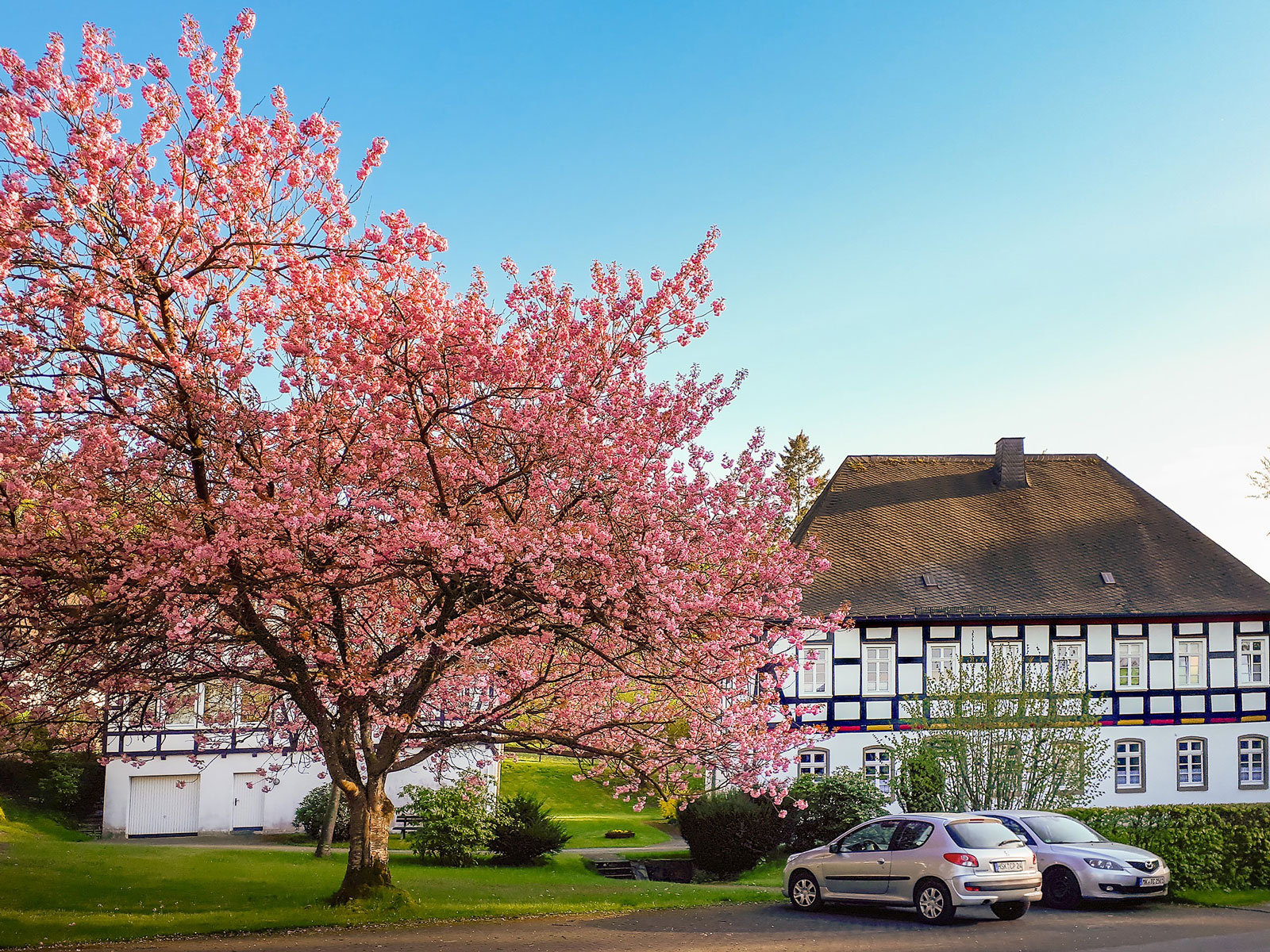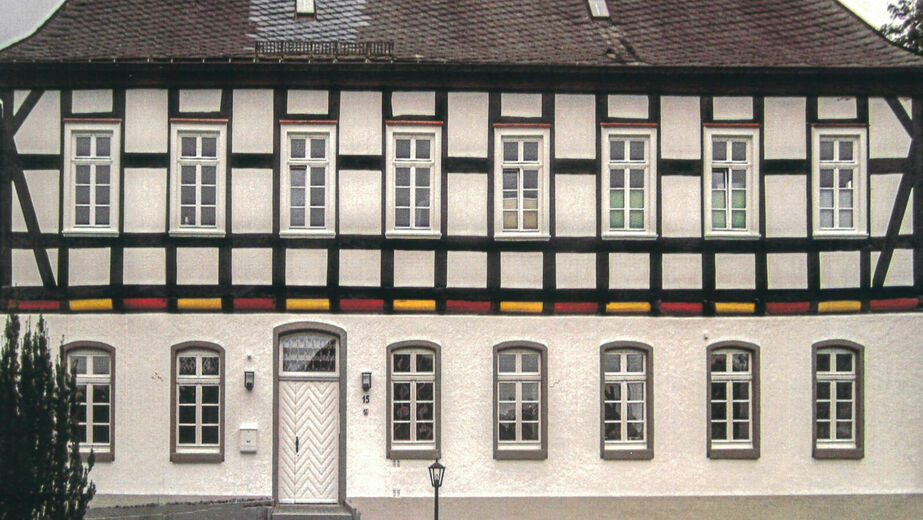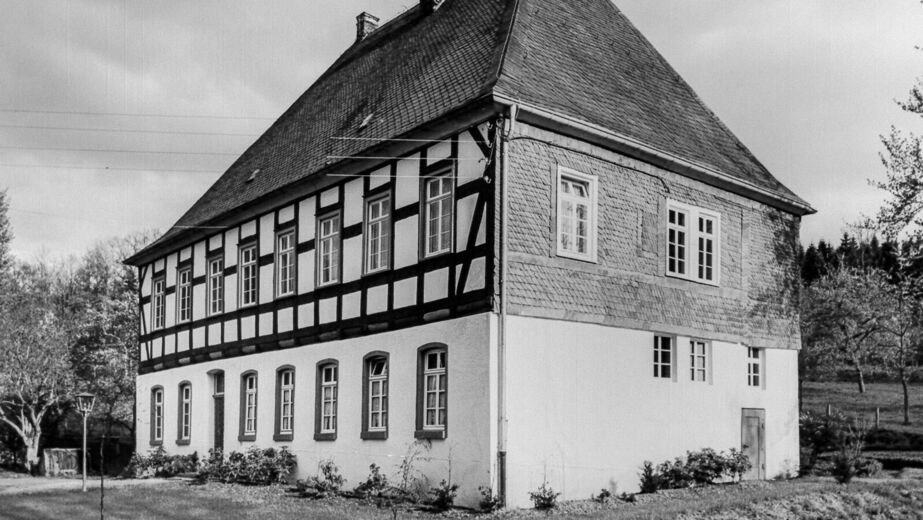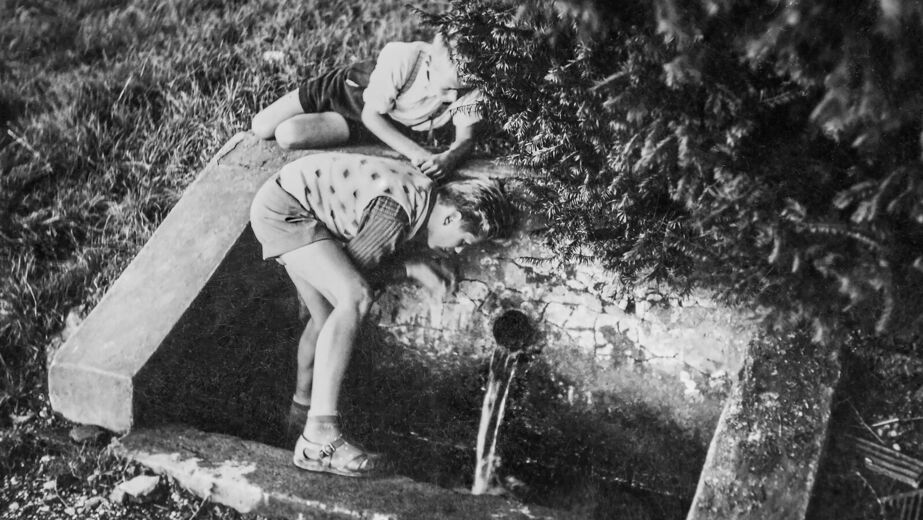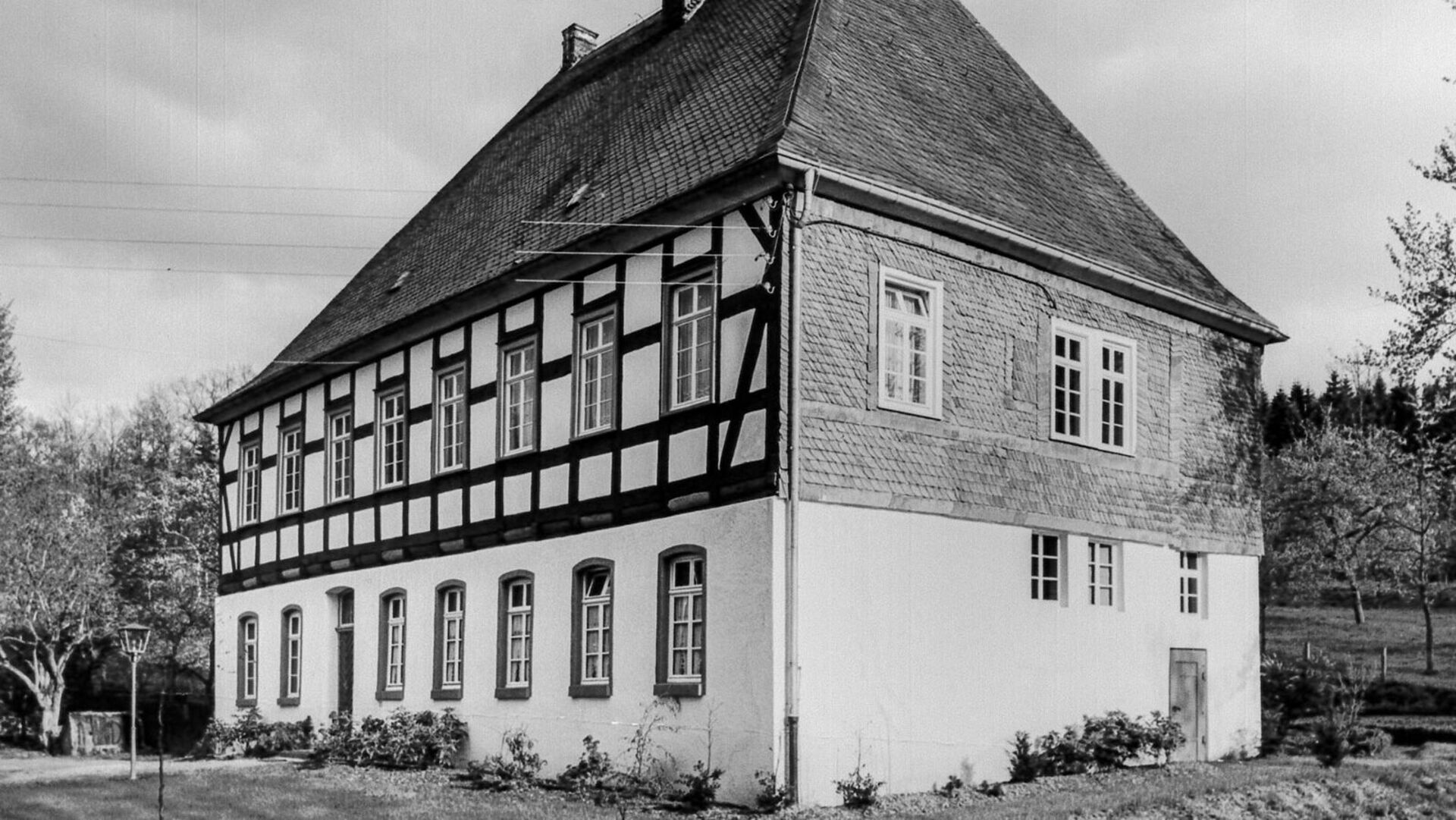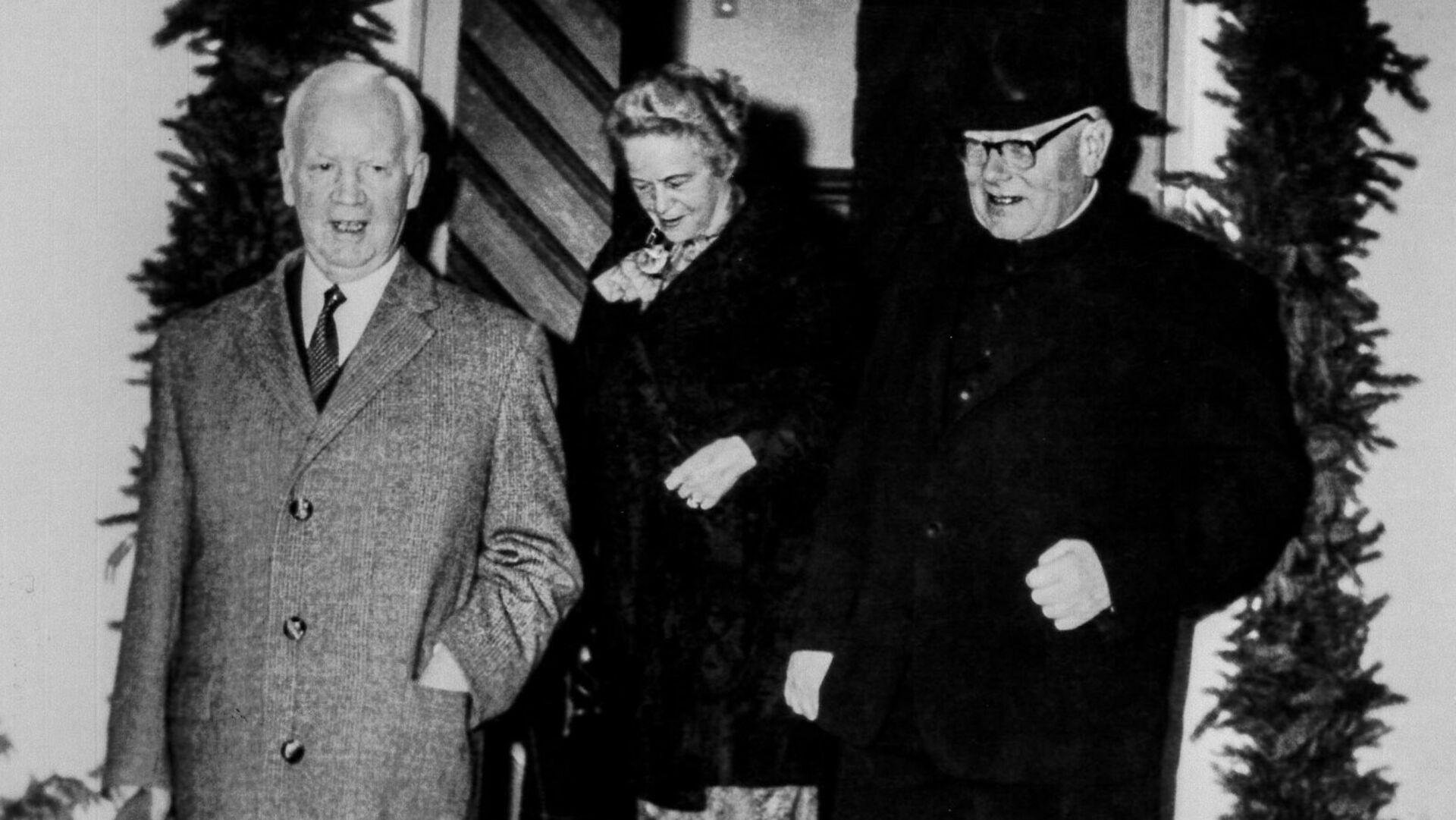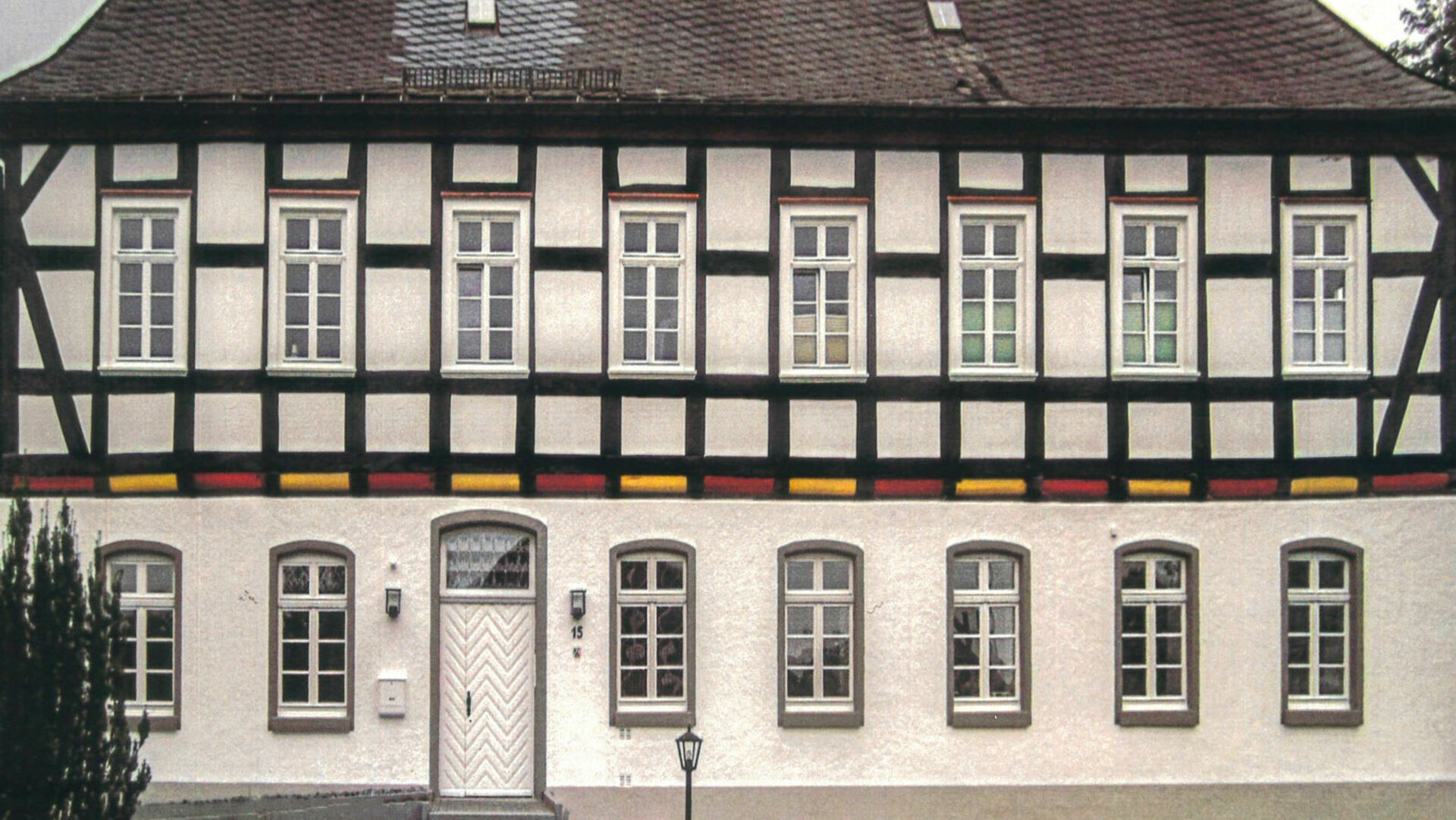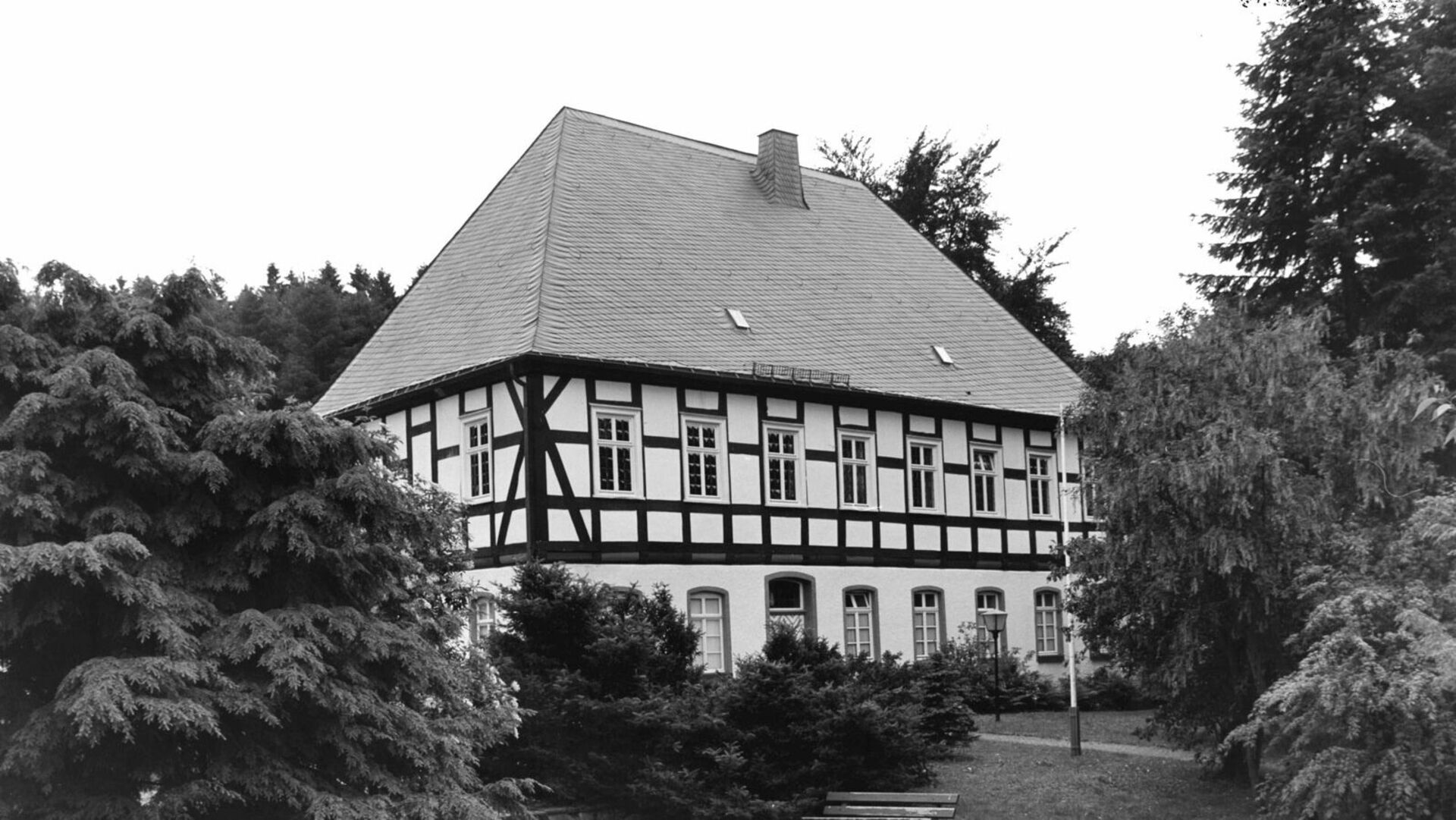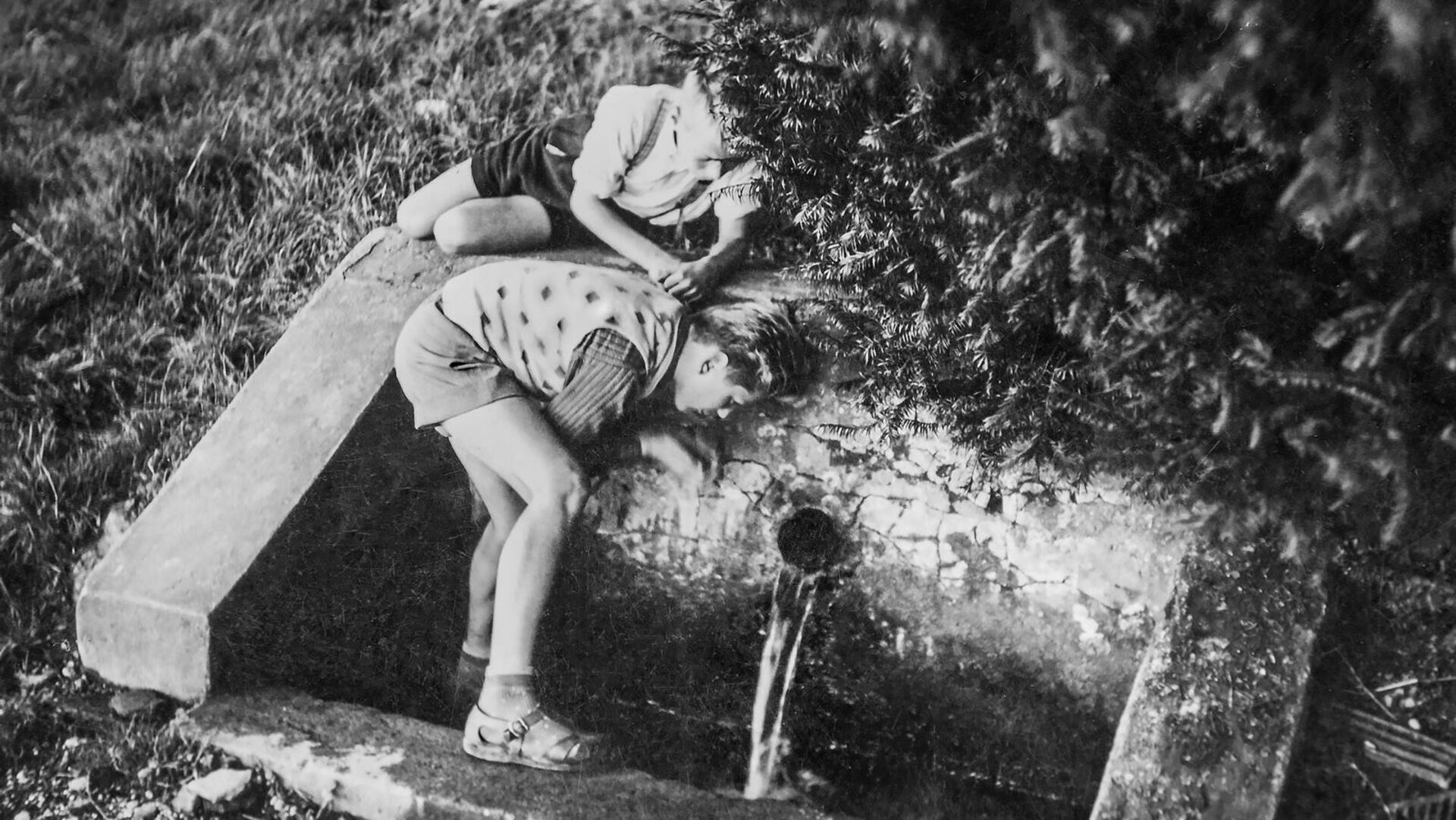Rectory Wormbach
Protective refuge in a sacred place
On the southern edge of the Schmallenberg district Wormbach, the listed building from the 18th century characterizes the townscape. It was originally built purely as a residential building. The rectory right next to it used to be a farm building and now houses a public Catholic library. Pastor's Pond", a fish pond with carp and trout, and "Pastor's Strülleken", a small enclosed spring, belong to the rectory. There was already an original parish here around the year 800 and presumably the first church in the village. It is therefore assumed that this was one of the first Christian sites in the Sauerland is concerned.
After the previous rectory fell into disrepair, Pastor Bonifatius Populo had a new one built on the same site at the beginning of the 18th century. It comprises 10 rooms, including the so-called Berghauser and Fredeburger Stuben. In the past, older pastors from Berghausen and Fredeburg were cared for until their death. A farm building, which has since been demolished, provided space for tenants and animals. Today, the parish hall built in 1979 stands there. During the Second World War, the then pastor Rüsing set up a dressing station; wounded soldiers were also cared for here. When the American troops Wormbach conquered, they first stormed the rectory: they probably suspected a resistance nest. Due to fierce resistance from German SS troops, the Sauerland was particularly hard-fought at the end of the war, so that village areas were also the target of air raids. Over 100 windows of the rectory were broken.
Built in 1717/1718, the rectory is a stately eaves building with a high, slated hipped roof. The solid brick first floor is plastered and supports a simply structured half-timbered upper floor, which is slated to the west. While all the openings on the first floor have a segmental arch, the windows on the half-timbered floor have profiled, colourfully contrasted lugs on the lintels. The corners of the house are constructed with K-struts. The timbers above the first floor are carved and painted. The house originally had 10 rooms. New pastors often adapted the layout to their own needs and the spirit of the times. Despite many alterations, some of the original baroque doors have been preserved. The first extensive renovation took place in 1890, with the last major building work amounting to 500,000 euros in 2015. The grounds were renovated in 2020/21, including paths, beech hedges and the edging around the fountain.
In addition to the current pastors, old pastors and those in need of care lived in the Wormbach vicarage time and again. During the Second World War, wounded German soldiers were cared for in the rooms. After the war, refugee families moved in and lived here until the early 1950s. Pastor August Rüsing left his mark on the parish and the town long after his death. He was in office from 1937-1968, from 1947 as dean. At his suggestion, wooden crosses were hung on the lime trees around the church. They are intended to commemorate the soldiers from Wormbach remember them. The uniform roofed wooden crosses in the cemetery were also his idea. In this way, he wanted to make it clear that everyone is equal in death. Today, the parish office, the parish archive and the offices of the parish clerks are located in the basement of the rectory. The upper floor houses the pastor's apartment and the Bible workshop.
Vertelleken
Chatting out of the sewing box...
Not far from the vicarage is an enclosed spring from which water still runs even in hot, dry summers. It is called "Pastors Strülleken". In Sauerländer Platt, "Strülleken" stands for a small stream of liquid. The spring has a reputation for never running dry and is considered an "eternal spring". The fish pond is also fed by the same water. Another inflow is a stream coming from the southwest. This is why it is not drinking water, although the Strülleken was once used for this purpose. The area around the vicarage is generally damp, and some of the damage to the foundation walls can be seen. The water of the Strülleken is popularly said to have healing powers, presumably because St. Boniface is said to have baptized the first Christians here in the 8th century.


